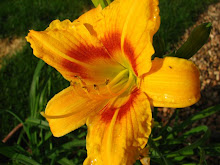Groundwater mapping of Doon
In order to get comprehensive information about the availability of groundwater and future exploration sites, the Jal Sansthan has started an exercise of mapping groundwater in Doon in collaboration with the University of Applied Sciences Dresden University, Germany.
As the topography of Dehradun is uneven, the exercise, called for the establishment of groundwater monitoring well network, will boost efforts to provide uninterrupted water supply in areas in the city that are located at a certain height termed as upper zone. The global positioning system (GPS) is being used to locate sources and what is aiding the workers are the already existing hand pumps and bore-well sites mapped by Asian Development Bank (ADB) during the earlier project.
“Not only is the availability of groundwater ascertained, but also the quality of water is being tested in case new water supply schemes have to be introduced. Essentially, a groundwater contour map is being prepared. As the city is dependent for most of its needs on groundwater, such a map will be of immense help. There are roughly 21 key points comprising existing bore points and hand-pump sites in the city,” said PC Kimothi, Secretary (Appraisal), Jal Sansthan.
The Jal Sansthan has been trying to upgrade the water supply in the upper zone areas of Dehradun consisting of Rajpur and Malsi where earlier attempts to set up a mini-tube-well failed. “But repeated search helped us in establishing a mini-tube-well at Johri and it is generating 500-600 litres of water per minute. These mini-tube-wells can be sunk on the roadside and do not even require a pump house,” said Neelima Garg, Executive Engineer, Central Store, Dehradun.
Jal Sansthan’s technocrats are of the opinion that after the successful mapping of Dehradun, similar efforts would be undertaken in Haridwar, Udham Singh Nagar and Pauri.
To enhance water supply, a collaborative effort among the Jal Sansthan, IIT-Roorkee, the University of Applied Sciences, Dresden, Germany, and Dusseldorf Water Company (Germany) is under way on the river bank filtration technique.
It is being carried out on the Ganga at Pant Dweep Island, Haridwar. It is accounting for 50 per cent of water supply and the daily production of water is 32 mld. At present, 3-5 metres of aquifer is being tapped. Now, 38 per cent of water is being extracted through infiltration wells.
to meet future needs Neena SharmaTribune News Service
Dehradun, November 24In order to get comprehensive information about the availability of groundwater and future exploration sites, the Jal Sansthan has started an exercise of mapping groundwater in Doon in collaboration with the University of Applied Sciences Dresden University, Germany.
As the topography of Dehradun is uneven, the exercise, called for the establishment of groundwater monitoring well network, will boost efforts to provide uninterrupted water supply in areas in the city that are located at a certain height termed as upper zone. The global positioning system (GPS) is being used to locate sources and what is aiding the workers are the already existing hand pumps and bore-well sites mapped by Asian Development Bank (ADB) during the earlier project.
“Not only is the availability of groundwater ascertained, but also the quality of water is being tested in case new water supply schemes have to be introduced. Essentially, a groundwater contour map is being prepared. As the city is dependent for most of its needs on groundwater, such a map will be of immense help. There are roughly 21 key points comprising existing bore points and hand-pump sites in the city,” said PC Kimothi, Secretary (Appraisal), Jal Sansthan.
The Jal Sansthan has been trying to upgrade the water supply in the upper zone areas of Dehradun consisting of Rajpur and Malsi where earlier attempts to set up a mini-tube-well failed. “But repeated search helped us in establishing a mini-tube-well at Johri and it is generating 500-600 litres of water per minute. These mini-tube-wells can be sunk on the roadside and do not even require a pump house,” said Neelima Garg, Executive Engineer, Central Store, Dehradun.
Jal Sansthan’s technocrats are of the opinion that after the successful mapping of Dehradun, similar efforts would be undertaken in Haridwar, Udham Singh Nagar and Pauri.
To enhance water supply, a collaborative effort among the Jal Sansthan, IIT-Roorkee, the University of Applied Sciences, Dresden, Germany, and Dusseldorf Water Company (Germany) is under way on the river bank filtration technique.
It is being carried out on the Ganga at Pant Dweep Island, Haridwar. It is accounting for 50 per cent of water supply and the daily production of water is 32 mld. At present, 3-5 metres of aquifer is being tapped. Now, 38 per cent of water is being extracted through infiltration wells.
---Neena SharmaTribune News Service Dehradun, November 24


